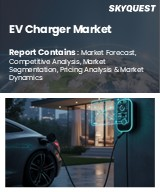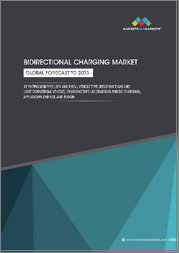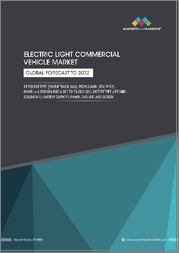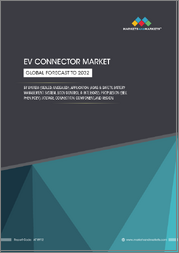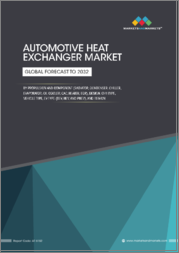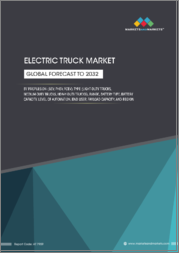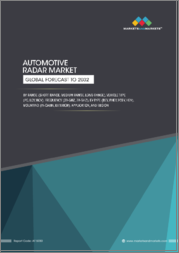
|
시장보고서
상품코드
1856820
세계의 플러그인 하이브리드 EV 시장 예측(-2032년) : 차종별, 배터리 용량별, 파워트레인별, 충전 모드별, 기능별, 최종사용자별, 지역별 세계 분석Plug-in Hybrid EV Market Forecasts to 2032 - Global Analysis By Vehicle Type (Passenger Cars, SUVs, Vans, and Buses), Battery Capacity, Powertrain, Charging Mode, Feature, End User and By Geography |
||||||
Stratistics MRC에 따르면 세계의 플러그인 하이브리드 EV 시장은 2025년에 1,585억 달러를 차지하며 예측 기간 중 CAGR은 9.1%로, 2032년까지는 2,926억 달러에 달할 전망입니다. 플러그인 하이브리드 EV는 내연기관 엔진에 전기모터와 충전식 배터리를 결합한 것으로, 외부 전원으로 충전이 가능합니다. 이 자동차는 전기 모드와 연료 모드를 전환할 수 있어 연료 효율을 높이고 배기가스를 줄일 수 있습니다. 이 듀얼 시스템은 다양한 주행 조건에 유연하게 대응하고 지속가능성 목표를 지원합니다. 플러그인 하이브리드는 기존 전기차와 완전 전기차의 간극을 메우는 과도기적 기술로, 충전 인프라에 전적으로 의존하지 않고도 저배출 가스를 원하는 소비자에게 이상적입니다.
IEA Global EV Outlook에 따르면 플러그인 하이브리드는 여전히 과도기적 기술이며, 장거리 이동의 유연성을 제공하는 동시에 충전 인프라가 제한된 지역의 전기화 목표를 지원합니다.
하이브리드차 보급을 촉진하는 정부 인센티브
하이브리드차 보급을 촉진하는 정부의 인센티브가 플러그인 하이브리드 전기자동차 시장을 촉진하고 있습니다. 세액공제, 보조금, 리베이트 등의 정책으로 소비자들이 친환경 자동차를 구매하도록 유도하고 있습니다. 배출가스 감축 목표와 지속가능한 모빌리티에 대한 노력에 힘입어 자동차 제조업체들은 하이브리드차량 생산을 늘리고 모델 라인업을 확장하고 있습니다. 또한 플러그인 하이브리드 기술 연구개발 및 보급에 대한 인센티브는 배터리, 파워트레인, 차량 효율의 혁신을 촉진할 것입니다. 이러한 조치들이 결합되어 시장 도입을 촉진하고, 전 세계에서 저공해 교통수단으로의 전환을 가속화할 것입니다.
복잡한 드라이브 트레인 및 유지보수 문제
복잡한 구동계와 유지보수 문제는 여전히 플러그인 하이브리드 EV 시장의 주요 억제요인으로 남아 있습니다. 내연기관과 전기 파워트레인을 통합하면 기계 및 전자 시스템의 복잡성이 증가합니다. 이러한 복잡성은 유지보수 비용을 상승시키고, 전문적인 서비스 인프라를 필요로 하며, 소비자의 장기적인 신뢰성에 대한 인식을 떨어뜨릴 수 있습니다. 또한 여러 파워트레인 컴포넌트를 정비하고 소프트웨어와 배터리 관리 시스템을 원활하게 통합하는 것은 운영상 과제입니다. 제조업체들은 교육 프로그램, 기술 지원, 모듈형 설계 솔루션에 투자함으로써 이러한 장벽을 낮추고 보급을 지원하고 있습니다.
충전 인프라 및 항속거리 확대
충전 인프라와 항속거리의 확대는 플러그인 하이브리드 전기자동차 시장에 큰 성장 기회를 가져다 줄 것입니다. 공공 충전 네트워크, 급속 충전소, 가정용 충전 솔루션의 개선은 자동차의 사용 편의성과 소비자의 신뢰를 높일 수 있습니다. 배터리의 에너지 밀도와 주행거리 최적화가 진행되면서 플러그인 하이브리드차량은 전기만으로 더 먼 거리를 주행할 수 있게 되었습니다. 스마트 그리드 시스템 및 비히클 투 그리드 기술과의 통합은 효율적인 에너지 사용을 더욱 촉진할 것입니다. 이러한 시장 개발은 보급 확대에 유리한 여건을 조성하고, 항속거리에 대한 불안감을 해소하며, 세계 시장 침투를 가속화할 수 있습니다.
순수 전기자동차와의 경쟁
순수 전기자동차와의 경쟁은 플러그인 하이브리드 전기자동차 시장에 큰 위협이 될 수 있습니다. 배터리 비용의 하락, 전기자동차 주행거리의 연장, 충전 인프라의 확장으로 완전 전기자동차는 환경에 민감한 소비자들에게 점점 더 선호되고 있습니다. OEM 업체들은 순수 전기자동차 플랫폼을 우선시하고 있으며, 플러그인 하이브리드 모델공급이 제한될 수 있습니다. 또한 전기자동차에 대한 인센티브와 기술 발전으로 인해 소비자의 선호는 무공해 모빌리티로 이동하고 있습니다. 경쟁력을 유지하기 위해 플러그인 하이브리드 프로바이더는 시장에서 차별화를 꾀하고, 혁신하고, 성능을 최적화하고, 전기 주행거리와 하이브리드 효율의 균형을 맞추면서 경쟁력을 유지해야 합니다.
COVID-19의 영향:
COVID-19 팬데믹은 생산 중단, 공급망 혼란, 자동차 판매 감소로 인해 플러그인 하이브리드 전기자동차의 보급을 일시적으로 지연시켰습니다. 경기의 불투명성과 가동 중단으로 인해 소비자의 신차 수요는 감소했습니다. 그러나 COVID-19 이후 경기 회복, 정부의 경기 부양책, 환경 문제에 대한 관심의 재점화로 인해 플러그인 하이브리드차에 대한 관심이 높아졌습니다. 소비자들은 연비, 배기가스 배출량 감소, 다양한 주행 모드를 점점 더 중요하게 여기게 되었습니다. OEM은 하이브리드 모델 출시 가속화, 디지털 판매 채널 도입, 애프터서비스 지원 강화 등을 통해 세계 플러그인 하이브리드 전기자동차 시장의 지속적인 성장에 대응했습니다.
예측 기간 중 승용차 부문이 가장 클 것으로 예측됩니다.
예측 기간 중 승용차 부문이 가장 큰 시장 점유율을 차지할 것으로 예상되는데, 이는 하이브리드 엔진이 탑재된 개인용 자동차에 대한 소비자의 선호도가 높아졌기 때문입니다. 인센티브, 환경 의식, 도시 모빌리티 규제에 힘입어 승용차가 플러그인 하이브리드차 판매의 대부분을 차지하고 있습니다. 자동차 제조업체들은 세단, 해치백, SUV 등 각 카테고리에서 모델 출시를 확대하고 있습니다. 높은 연비와 배출가스 감소가 시장 확대에 박차를 가하고 있으며, 딜러 네트워크, E-Commerce 플랫폼, 세계 전략적 마케팅 캠페인이 지원하고 있습니다.
예측 기간 중 병렬 하이브리드 분야가 가장 높은 CAGR을 보일 것으로 예측됩니다.
예측 기간 중 병렬 하이브리드 분야는 효율적인 듀얼 파워트레인 시스템의 채택 증가에 힘입어 가장 높은 성장률을 나타낼 것으로 예측됩니다. 엔진과 전기의 통합, 회생 제동, 에너지 관리의 발전에 힘입어 병렬 하이브리드는 연비 향상과 저배출을 실현할 수 있습니다. 자동차 제조업체들은 소비자 수요를 충족시키기 위해 병렬 하이브리드 구성의 SUV, 세단, 상용차에 집중하고 있습니다. 지속적인 연구개발, 정부 인센티브, 인프라 확충이 성장을 더욱 촉진하고 있으며, 이 부문은 플러그인 하이브리드 전기자동차 시장에서 전 세계에서 가장 빠르게 성장하고 있는 분야입니다.
가장 큰 점유율을 차지하는 지역:
예측 기간 중 아시아태평양이 가장 큰 시장 점유율을 차지할 것으로 예측됩니다. 이는 정부의 강력한 정책, 전기자동차 보급률 상승, 자동차 제조 거점의 성장에 기인합니다. 중국, 일본, 한국, 인도 등의 국가에서는 도시 및 교외 이동 수단으로 플러그인 하이브리드차의 도입이 증가하고 있습니다. 인프라 개발, 지역 인센티브, 지속가능한 교통수단에 대한 소비자의 관심이 이 지역 시장 리더십을 지원하고 있습니다. 아시아태평양은 전 세계에서 양호한 정책, 생산 및 소비 동향에 힘입어 플러그인 하이브리드 EV의 지배적인 시장으로 부상하고 있습니다.
CAGR이 가장 높은 지역:
예측 기간 중 북미는 높은 환경 인식, 정부 인센티브, 충전 인프라 확대로 인해 가장 높은 CAGR을 보일 것으로 예측됩니다. 미국과 캐나다에서는 개인용과 차량용 하이브리드차량의 도입이 증가하고 있습니다. 기술 발전, 유리한 정책, OEM의 투자 확대에 힘입어 플러그인 하이브리드차는 도시와 교외의 소비자들에게 매력적인 존재가 되고 있습니다. 배터리, 구동계, 스마트 커넥티비티 솔루션의 끊임없는 기술 혁신으로 세계 플러그인 하이브리드 전기자동차 시장에서 북미의 견고한 성장이 확실시되고 있습니다.
무료 커스터마이징 서비스
이 보고서를 구독하는 고객은 다음과 같은 무료 맞춤화 옵션 중 하나를 이용할 수 있습니다.
- 기업 소개
- 추가 시장 기업의 종합적인 프로파일링(최대 3사)
- 주요 기업의 SWOT 분석(최대 3사)
- 지역 세분화
- 고객의 관심에 따른 주요 국가별 시장 추정, 예측, CAGR(주: 타당성 확인에 따라 다름)
- 경쟁사 벤치마킹
- 제품 포트폴리오, 지역적 입지, 전략적 제휴를 기반으로 한 주요 기업 벤치마킹
목차
제1장 개요
제2장 서문
- 개요
- 이해관계자
- 조사 범위
- 조사 방법
- 데이터 마이닝
- 데이터 분석
- 데이터 검증
- 조사 어프로치
- 조사 정보원
- 1차 조사 정보원
- 2차 조사 자료
- 전제조건
제3장 시장 동향 분석
- 촉진요인
- 억제요인
- 기회
- 위협
- 최종사용자 분석
- 신흥 시장
- COVID-19의 영향
제4장 Porters Five Force 분석
- 공급 기업의 교섭력
- 바이어의 교섭력
- 대체품의 위협
- 신규 진출업체의 위협
- 경쟁 기업 간 경쟁 관계
제5장 세계의 플러그인 하이브리드 EV 시장 : 차종별
- 승용차
- SUV
- 밴
- 버스
제6장 세계의 플러그인 하이브리드 EV 시장 : 배터리 용량별
- 저(10kWh 미만)
- 중(10-20kWh)
- 고(20kWh 초과)
제7장 세계의 플러그인 하이브리드 EV 시장 : 파워트레인별
- 패러렐 하이브리드
- 시리즈 하이브리드
- 시리즈 패러렐
제8장 세계의 플러그인 하이브리드 EV 시장 : 충전 모드별
- 플러그인 AC
- DC 급속 충전
- 무선 충전
제9장 세계의 플러그인 하이브리드 EV 시장 : 기능별
- 첨단 인포테인먼트
- 자율주행
- 커넥티드카 기능
제10장 세계의 플러그인 하이브리드 EV 시장 : 최종사용자별
- 개인소비자
- 기업용 차량
- 정부 차량
제11장 세계의 플러그인 하이브리드 EV 시장 : 지역별
- 북미
- 미국
- 캐나다
- 멕시코
- 유럽
- 독일
- 영국
- 이탈리아
- 프랑스
- 스페인
- 기타 유럽
- 아시아태평양
- 일본
- 중국
- 인도
- 호주
- 뉴질랜드
- 한국
- 기타 아시아태평양
- 남미
- 아르헨티나
- 브라질
- 칠레
- 기타 남미
- 중동 및 아프리카
- 사우디아라비아
- 아랍에미리트
- 카타르
- 남아프리카공화국
- 기타 중동 및 아프리카
제12장 주요 발전
- 계약, 파트너십, 협업, 조인트 벤처
- 인수와 합병
- 신제품 발매
- 사업 확대
- 기타 주요 전략
제13장 기업 프로파일링
- Toyota
- Volkswagen
- BMW
- Mercedes-Benz
- Ford
- Mitsubishi
- Kia
- Hyundai
- Volvo Cars
- Porsche
- Lexus
- Audi
- Peugeot
- Jaguar Land Rover
- Honda
- Subaru
- Chery
- Geely
According to Stratistics MRC, the Global Plug-in Hybrid EV Market is accounted for $158.5 billion in 2025 and is expected to reach $292.6 billion by 2032 growing at a CAGR of 9.1% during the forecast period. Plug-in Hybrid EVs combine an internal combustion engine with an electric motor and rechargeable battery, allowing charging via external power sources. These vehicles can switch between electric and fuel modes, enhancing fuel efficiency and reducing emissions. The dual system offers flexibility for varied driving conditions and supports sustainability goals. Plug-in hybrids serve as a transitional technology, bridging the gap between conventional and fully electric vehicles, making them ideal for consumers seeking lower emissions without full reliance on charging infrastructure.
According to IEA Global EV Outlook, plug-in hybrids remain a transitional technology, offering flexibility for long-distance travel while supporting electrification goals in regions with limited charging infrastructure.
Market Dynamics:
Driver:
Government incentives boosting hybrid adoption
Government incentives boosting hybrid adoption are driving the plug-in hybrid EV market. Policies such as tax credits, subsidies, and rebates encourage consumers to purchase environmentally friendly vehicles. Spurred by emission reduction targets and sustainable mobility initiatives, automakers are increasing hybrid production and expanding model offerings. Additionally, incentives for research, development, and deployment of plug-in hybrid technologies foster innovation in batteries, powertrains, and vehicle efficiency. Together, these measures enhance market adoption and accelerate transition toward low-emission transportation globally.
Restraint:
Complex drivetrain and maintenance challenges
Complex drivetrain and maintenance challenges remain key restraints for the plug-in hybrid EV market. Integrating internal combustion engines with electric powertrains increases mechanical and electronic system complexity. This complexity raises maintenance costs, requires specialized service infrastructure, and may reduce long-term reliability perceptions among consumers. Additionally, servicing multiple powertrain components and ensuring seamless integration of software and battery management systems pose operational challenges. Manufacturers are investing in training programs, technical support, and modular design solutions to mitigate these barriers while supporting adoption.
Opportunity:
Charging infrastructure and range expansion
Charging infrastructure and range expansion present significant growth opportunities for the plug-in hybrid EV market. Improved public charging networks, fast-charging stations, and home charging solutions enhance vehicle usability and consumer confidence. Spurred by advances in battery energy density and range optimization, plug-in hybrids can travel longer distances on electric power alone. Integration with smart grid systems and vehicle-to-grid technologies further supports efficient energy utilization. These developments create favorable conditions for increased adoption, reducing range anxiety and accelerating market penetration globally.
Threat:
Competition from pure electric vehicles
Competition from pure electric vehicles poses a major threat to the plug-in hybrid EV market. With declining battery costs, extended EV range, and expanding charging infrastructure, fully electric vehicles are increasingly preferred by environmentally conscious consumers. OEMs are prioritizing all-electric platforms, which may limit plug-in hybrid model availability. Additionally, EV incentives and technological advancements shift consumer preference toward zero-emission mobility. To remain competitive, plug-in hybrid providers must innovate, optimize performance, and balance electric-only range with hybrid efficiency while differentiating their offerings in the market.
Covid-19 Impact:
The COVID-19 pandemic temporarily slowed plug-in hybrid EV adoption due to production halts, supply chain disruptions, and reduced automotive sales. Spurred by economic uncertainty and lockdowns, consumer demand for new vehicles declined. However, post-pandemic recovery, government stimulus packages, and renewed environmental focus revived interest in plug-in hybrids. Consumers increasingly valued fuel efficiency, reduced emissions, and versatile driving modes. OEMs adapted by accelerating hybrid model launches, implementing digital sales channels, and enhancing aftersales support, supporting sustained growth in the global plug-in hybrid EV market.
The passenger cars segment is expected to be the largest during the forecast period
The passenger cars segment is expected to account for the largest market share during the forecast period, resulting from increasing consumer preference for hybrid-powered personal vehicles. Fueled by incentives, environmental awareness, and urban mobility regulations, passenger cars dominate plug-in hybrid sales. Automakers are expanding model availability across sedan, hatchback, and SUV categories. Spurred by fuel efficiency benefits and reduced emissions, passenger cars remain the primary focus of market expansion, supported by dealer networks, e-commerce platforms, and strategic marketing campaigns globally.
The parallel hybrid segment is expected to have the highest CAGR during the forecast period
Over the forecast period, the parallel hybrid segment is predicted to witness the highest growth rate, propelled by increasing adoption of efficient dual-powertrain systems. Spurred by advancements in engine-electric integration, regenerative braking, and energy management, parallel hybrids offer enhanced fuel economy and lower emissions. Automotive manufacturers are focusing on SUVs, sedans, and commercial vehicles with parallel hybrid configurations to meet consumer demand. Continuous R&D, government incentives, and infrastructure expansion further reinforce growth, making this segment the fastest-growing within the plug-in hybrid EV market globally.
Region with largest share:
During the forecast period, the Asia Pacific region is expected to hold the largest market share, attributed to strong government policies, rising EV adoption, and growing automotive manufacturing hubs. Countries such as China, Japan, South Korea, and India are witnessing increasing deployment of plug-in hybrids for urban and suburban mobility. Infrastructure development, local incentives, and consumer interest in sustainable transportation support regional market leadership. Asia Pacific is emerging as the dominant market for plug-in hybrid EVs, driven by favorable policy, production, and consumption trends globally.
Region with highest CAGR:
Over the forecast period, the North America region is anticipated to exhibit the highest CAGR associated with strong environmental awareness, government incentives, and expanding charging infrastructure. The U.S. and Canada are witnessing increasing hybrid vehicle adoption across personal and fleet segments. Spurred by technological advancements, favorable policies, and growing investments from OEMs, plug-in hybrids are becoming attractive for urban and suburban consumers. Continuous innovation in battery, drivetrain, and smart connectivity solutions ensures North America's robust growth trajectory within the global plug-in hybrid EV market.
Key players in the market
Some of the key players in Plug-in Hybrid EV Market include Toyota, Volkswagen, BMW, Mercedes-Benz, Ford, Mitsubishi, Kia, Hyundai, Volvo Cars, Porsche, Lexus, Audi, Peugeot, Jaguar Land Rover, Honda, Subaru, Chery, and Geely.
Key Developments:
In September 2025, Volkswagen announced a major expansion of its PHEV lineup with the new "Golf GTE with Range Extender Mode." This feature uses AI to learn driving routes and automatically reserves battery power for urban, zero-emission zones, ensuring compliance with city regulations and optimizing fuel efficiency.
In August 2025, Ford launched the all-new "Ford Escape PHEV Trailer Tow Package." This factory-certified package includes an upgraded cooling system for the battery and electric motor, a transmission oil cooler, and revised software, enabling the vehicle to tow up to 3,500 lbs while maximizing electric-only driving during non-towing trips.
In July 2025, BMW introduced its "BMW eDrive Zone" technology as a standard feature on all its plug-in hybrid models in Europe. The geofencing system automatically switches the vehicle to pure-electric mode upon entering a low-emission zone, and now integrates with navigation to pre-condition the battery for optimal EV performance upon arrival.
Vehicle Types Covered:
- Passenger Cars
- SUVs
- Vans
- Buses
Battery Capacities Covered:
- Low (<10 kWh)
- Medium (10-20 kWh)
- High (>20 kWh)
Powertrains Covered:
- Parallel Hybrid
- Series Hybrid
- Series-Parallel
Charging Modes Covered:
- Plug-in AC
- DC Fast Charge
- Wireless Charging
Features Covered:
- Advanced Infotainment
- Autonomous Driving
- Connected Car Features
End Users Covered:
- Individual Consumers
- Corporate Fleets
- Government Vehicles
Regions Covered:
- North America
- US
- Canada
- Mexico
- Europe
- Germany
- UK
- Italy
- France
- Spain
- Rest of Europe
- Asia Pacific
- Japan
- China
- India
- Australia
- New Zealand
- South Korea
- Rest of Asia Pacific
- South America
- Argentina
- Brazil
- Chile
- Rest of South America
- Middle East & Africa
- Saudi Arabia
- UAE
- Qatar
- South Africa
- Rest of Middle East & Africa
What our report offers:
- Market share assessments for the regional and country-level segments
- Strategic recommendations for the new entrants
- Covers Market data for the years 2024, 2025, 2026, 2028, and 2032
- Market Trends (Drivers, Constraints, Opportunities, Threats, Challenges, Investment Opportunities, and recommendations)
- Strategic recommendations in key business segments based on the market estimations
- Competitive landscaping mapping the key common trends
- Company profiling with detailed strategies, financials, and recent developments
- Supply chain trends mapping the latest technological advancements
Free Customization Offerings:
All the customers of this report will be entitled to receive one of the following free customization options:
- Company Profiling
- Comprehensive profiling of additional market players (up to 3)
- SWOT Analysis of key players (up to 3)
- Regional Segmentation
- Market estimations, Forecasts and CAGR of any prominent country as per the client's interest (Note: Depends on feasibility check)
- Competitive Benchmarking
- Benchmarking of key players based on product portfolio, geographical presence, and strategic alliances
Table of Contents
1 Executive Summary
2 Preface
- 2.1 Abstract
- 2.2 Stake Holders
- 2.3 Research Scope
- 2.4 Research Methodology
- 2.4.1 Data Mining
- 2.4.2 Data Analysis
- 2.4.3 Data Validation
- 2.4.4 Research Approach
- 2.5 Research Sources
- 2.5.1 Primary Research Sources
- 2.5.2 Secondary Research Sources
- 2.5.3 Assumptions
3 Market Trend Analysis
- 3.1 Introduction
- 3.2 Drivers
- 3.3 Restraints
- 3.4 Opportunities
- 3.5 Threats
- 3.6 End User Analysis
- 3.7 Emerging Markets
- 3.8 Impact of Covid-19
4 Porters Five Force Analysis
- 4.1 Bargaining power of suppliers
- 4.2 Bargaining power of buyers
- 4.3 Threat of substitutes
- 4.4 Threat of new entrants
- 4.5 Competitive rivalry
5 Global Plug-in Hybrid EV Market, By Vehicle Type
- 5.1 Introduction
- 5.2 Passenger Cars
- 5.3 SUVs
- 5.4 Vans
- 5.5 Buses
6 Global Plug-in Hybrid EV Market, By Battery Capacity
- 6.1 Introduction
- 6.2 Low (<10 kWh)
- 6.3 Medium (10-20 kWh)
- 6.4 High (>20 kWh)
7 Global Plug-in Hybrid EV Market, By Powertrain
- 7.1 Introduction
- 7.2 Parallel Hybrid
- 7.3 Series Hybrid
- 7.4 Series-Parallel
8 Global Plug-in Hybrid EV Market, By Charging Mode
- 8.1 Introduction
- 8.2 Plug-in AC
- 8.3 DC Fast Charge
- 8.4 Wireless Charging
9 Global Plug-in Hybrid EV Market, By Feature
- 9.1 Introduction
- 9.2 Advanced Infotainment
- 9.3 Autonomous Driving
- 9.4 Connected Car Features
10 Global Plug-in Hybrid EV Market, By End User
- 10.1 Introduction
- 10.2 Individual Consumers
- 10.3 Corporate Fleets
- 10.4 Government Vehicles
11 Global Plug-in Hybrid EV Market, By Geography
- 11.1 Introduction
- 11.2 North America
- 11.2.1 US
- 11.2.2 Canada
- 11.2.3 Mexico
- 11.3 Europe
- 11.3.1 Germany
- 11.3.2 UK
- 11.3.3 Italy
- 11.3.4 France
- 11.3.5 Spain
- 11.3.6 Rest of Europe
- 11.4 Asia Pacific
- 11.4.1 Japan
- 11.4.2 China
- 11.4.3 India
- 11.4.4 Australia
- 11.4.5 New Zealand
- 11.4.6 South Korea
- 11.4.7 Rest of Asia Pacific
- 11.5 South America
- 11.5.1 Argentina
- 11.5.2 Brazil
- 11.5.3 Chile
- 11.5.4 Rest of South America
- 11.6 Middle East & Africa
- 11.6.1 Saudi Arabia
- 11.6.2 UAE
- 11.6.3 Qatar
- 11.6.4 South Africa
- 11.6.5 Rest of Middle East & Africa
12 Key Developments
- 12.1 Agreements, Partnerships, Collaborations and Joint Ventures
- 12.2 Acquisitions & Mergers
- 12.3 New Product Launch
- 12.4 Expansions
- 12.5 Other Key Strategies
13 Company Profiling
- 13.1 Toyota
- 13.2 Volkswagen
- 13.3 BMW
- 13.4 Mercedes-Benz
- 13.5 Ford
- 13.6 Mitsubishi
- 13.7 Kia
- 13.8 Hyundai
- 13.9 Volvo Cars
- 13.10 Porsche
- 13.11 Lexus
- 13.12 Audi
- 13.13 Peugeot
- 13.14 Jaguar Land Rover
- 13.15 Honda
- 13.16 Subaru
- 13.17 Chery
- 13.18 Geely






